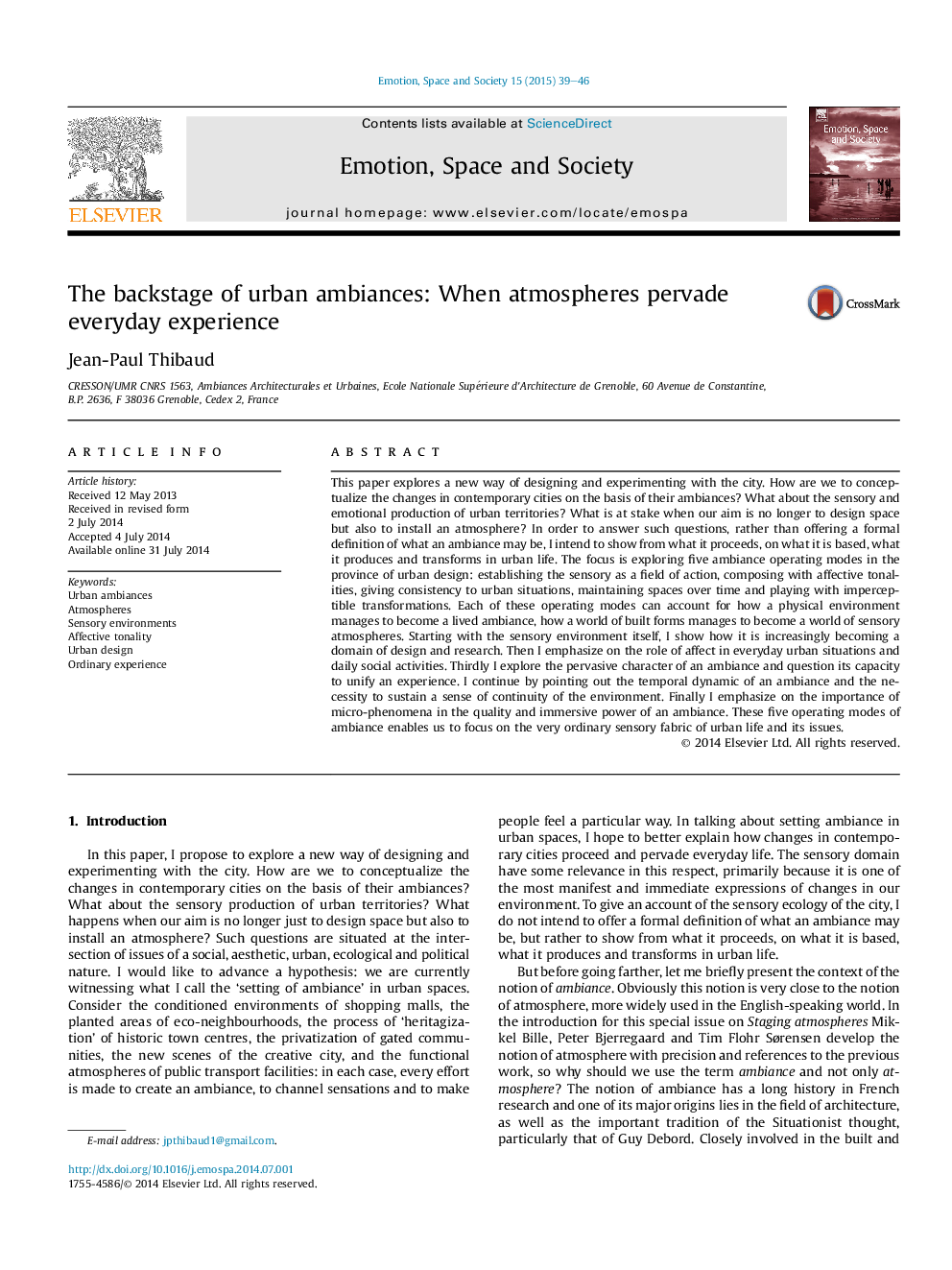| Article ID | Journal | Published Year | Pages | File Type |
|---|---|---|---|---|
| 946649 | Emotion, Space and Society | 2015 | 8 Pages |
This paper explores a new way of designing and experimenting with the city. How are we to conceptualize the changes in contemporary cities on the basis of their ambiances? What about the sensory and emotional production of urban territories? What is at stake when our aim is no longer to design space but also to install an atmosphere? In order to answer such questions, rather than offering a formal definition of what an ambiance may be, I intend to show from what it proceeds, on what it is based, what it produces and transforms in urban life. The focus is exploring five ambiance operating modes in the province of urban design: establishing the sensory as a field of action, composing with affective tonalities, giving consistency to urban situations, maintaining spaces over time and playing with imperceptible transformations. Each of these operating modes can account for how a physical environment manages to become a lived ambiance, how a world of built forms manages to become a world of sensory atmospheres. Starting with the sensory environment itself, I show how it is increasingly becoming a domain of design and research. Then I emphasize on the role of affect in everyday urban situations and daily social activities. Thirdly I explore the pervasive character of an ambiance and question its capacity to unify an experience. I continue by pointing out the temporal dynamic of an ambiance and the necessity to sustain a sense of continuity of the environment. Finally I emphasize on the importance of micro-phenomena in the quality and immersive power of an ambiance. These five operating modes of ambiance enables us to focus on the very ordinary sensory fabric of urban life and its issues.
